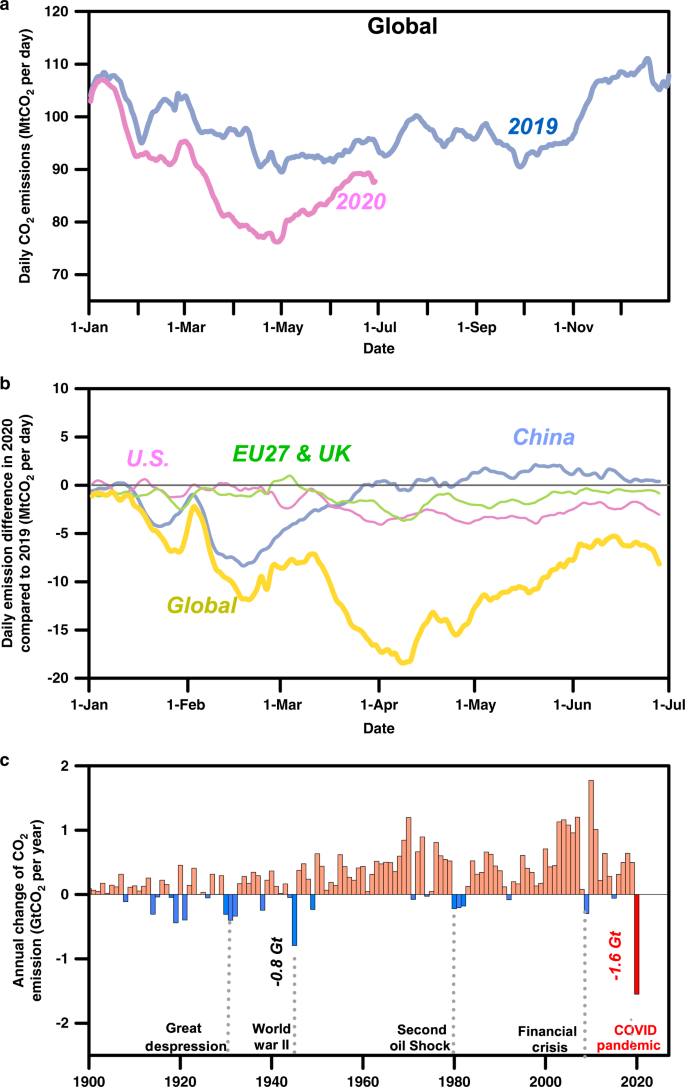Everyone knows that the COVID-19 pandemic had effects on nearly every aspect of life in the United States and all over the world, as well. However, something that few people expected when the pandemic began was the effects that it would have on pollution and the greenhouse effect. With stay-at-home orders, quarantining (both voluntary and involuntary), and businesses and schools closing, the amount of transportation and vehicle usage was dramatically reduced. This meant that the pandemic had a massive effect on the environment because of the lack of vehicle emissions–a large contributor to both air pollution and greenhouse gas emissions.
The graph above shows the dramatic drops globally in carbon dioxide emissions in 2020, especially during the peak of the pandemic in March through June. It is pretty common knowledge that vehicles are large contributors to air pollution and to carbon dioxide emissions, but looking at actual data of what emission rates look like when vehicle usage is dramatically reduced is still somewhat shocking. The drop in carbon dioxide emissions during the pandemic even looks dramatic when compared to other significant events in history that caused downward spikes, like the Great Depression and World War II.

The obvious question after hearing this might be about whether or not the cut in emissions during the pandemic was significant enough to have a lasting effect on overall emissions. The problem is that scientists do not yet know, and research into this exact idea is ongoing. The lab that I have an internship with recently got a large grant from the National Oceanic and Atmospheric Administration (NOAA) to research this subject. The project is being led by Penn State but is also in collaboration with multiple research groups across North America, including teams from the University of Colorado, the University of California San Diego, the University of Toronto, and Harvard University. It is focusing on the rapid changes in emissions and the consequent effects on local and regional air quality. The study is being done primarily with the use of observation towers located in major cities, including Los Angeles, Baltimore, Boston, Toronto, and Indianapolis. These are all areas where COVID-19 mitigation efforts had massive effects on carbon dioxide and methane emission levels because of the massive drop in commuters compared to usual. In addition to looking at how large of an impact the drop in emissions had on the cities’ pollution levels, the project also aims to test how well the towers were able to detect the drop since they are using a lot of new equipment and monitoring networks. And unfortunately, while the potential for lasting effects of the drops in 2020 is still being investigated, emission rates consequently appeared to skyrocket in 2021 in comparison.

Be First to Comment